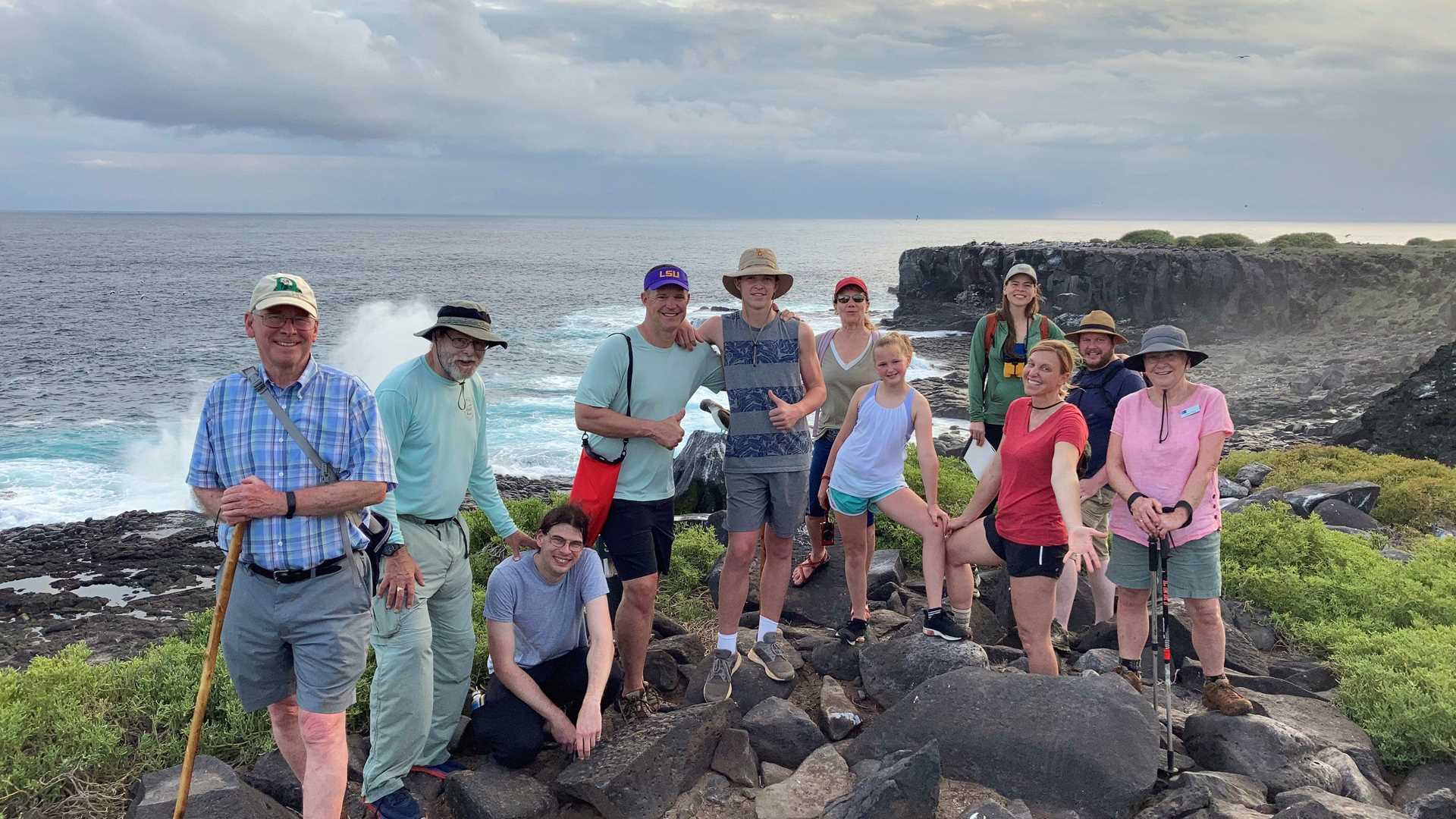Española Island, or Hood Island, is located in the southeast of the archipelago. It is considered the oldest island due to its location. Far from the Galapagos hot spot, this island is flat without highlands. Although the lack of rainfall had a significant bearing on the adaptation process that took place here, it was not an impediment to producing a great endemism. Many species are only found here, such as mockingbirds, lava lizards, and the waved albatross, the largest bird of the archipelago.
After a short navigation from Floreana Island in the early morning, we arrived in Gardner Bay, located east of Española. It was a little bit cloudy with calm seas and a soft breeze coming from the south when National Geographic Islander finally dropped anchor. Before breakfast, we had our first outing. As we kayaked in the calm waters around the island, we observed blue-footed boobies starting their daily routine of looking for food, diving, and catching some black-striped salemas.
After breakfast, we boarded Zodiacs and headed to the bay of Gardner Islet. We enjoyed a great snorkel as we discovered the unique underwater realms of the Galapagos. We observed stingrays, schools of salemas, and sea turtles. Some baby sea lions swam alongside us, as if inviting us to play with them. After snorkeling, we disembarked on the coralline white beach of Gardner Bay where we had another encounter with Galapagos sea lions. They slept indifferently along the beach while a flock of Espanola mockingbirds emerged from the bushes. They approached us, perhaps to offer an official welcome to the island. Our guests had a good chance to take pictures and to interact with the incredible creatures.
Later, we had the opportunity to get a taste of a delicious Mexican feast onboard the ship. Afterwards, our younger explorers had the chance to take Zodiac driving lessons with Ixora, one of the onboard naturalists. During this activity, a large pod of dolphins appeared in the distance. Over 200 dolphins jumped and swam close to us. They appeared to be inviting us to speed up the Zodiac. What a great experience!
In the afternoon, National Geographic Islander circumnavigated to the west, arriving at Punta Suarez. As soon as we landed, marine iguanas and sea lions captivated us with their tame and unique natures. Walking inland, we observed many dusty marine iguanas nesting; some dug holes to lay eggs, while others used their hind and forelimbs to bury the eggs.
Along the shore, we found many breeding colonies of different species of birds. We observed Nazca boobies, swallow-tailed gulls, and blue-footed boobies. The most exciting part of the hike was probably when we spotted a waved albatross flying in the distance, which I observed with my binoculars. We waited and waited for more than ten minutes. We were finally rewarded when three of those magnificent seabirds suddenly appeared and finally landed close to us. Our guests had the chance to photograph the amazing creatures. The albatrosses were likely the first to return to Espanola after months spent outside of Galapagos. To avoid the warm weather of the archipelago, this species of seabird flies along the cold waters in front of Chile during the first months of the year.
It was late when we headed back to the ship. With the last beams of sun behind us, we returned onboard. We were tired but happy after a day spent making memories that will remain with us forever.









